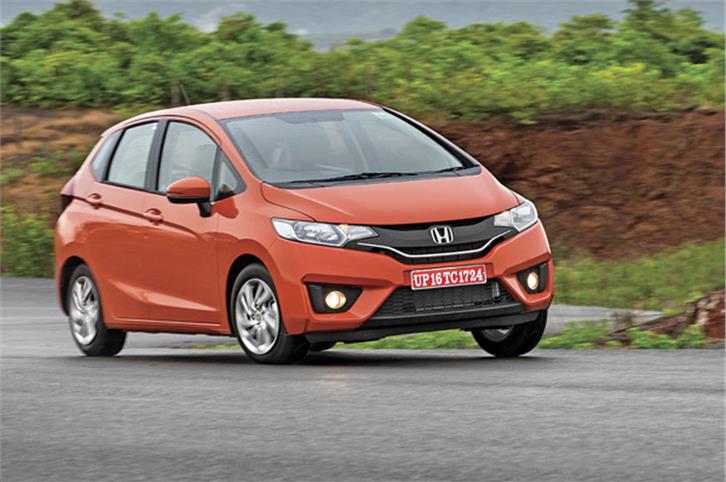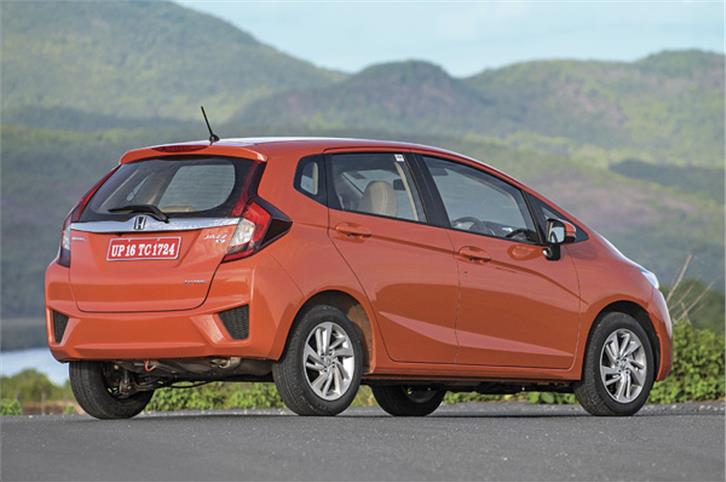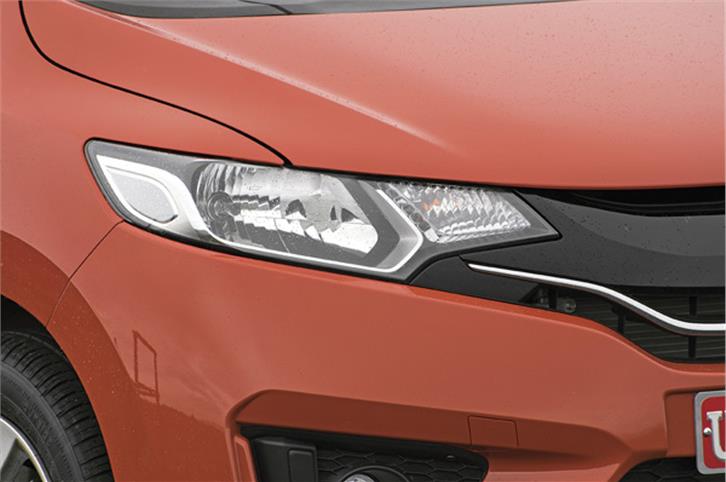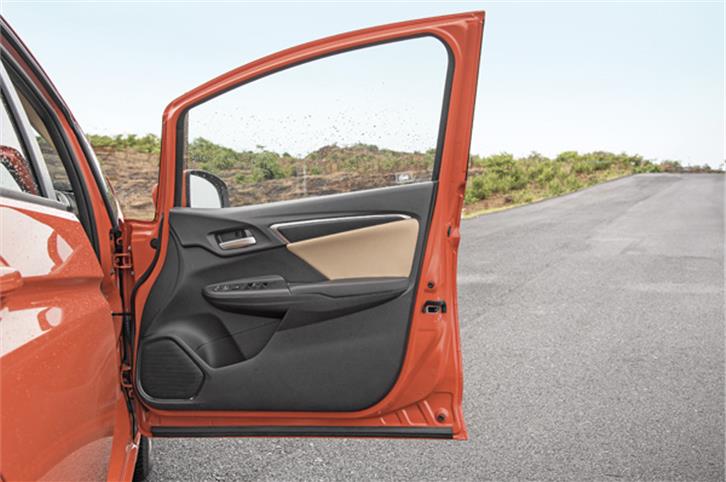2015 Honda Jazz review, road test
Read the 2015 Honda Jazz review, road test from Autocar India; The premium hatchback's back in India for its second innings. So, do the numbers on paper reflect in real-world results?
Published on Sep 14, 2015 12:28:00 PM
2,47,231 Views
Follow us on


Angular multi-element headlamps blend in well with the grille.

Large, wide-opening doors make ingress and egress easy.
The petrol Jazz still gets the same 1.2-litre i-VTEC motor, which we have extensively sampled in the Brio and the old Jazz. Like all modern Honda petrol engines, it is near-silent at idle and has good overall refinement. And while it’s available with a five-speed manual– like in the previous car – now, it also gets a CVT automatic option, making it even more city friendly.
Responses at low engine speeds are good and it gets off the line eagerly. But what lets it down is the weak mid-range. This means you will find yourself shifting down every time you want to pick up the pace and this can be a hindrance in some situations; like say, when you want to pull off overtaking manoeuvres on the highway. Like all Honda petrols, its real strength lies in its top-end and it gets a second wind if you rev it beyond 4500rpm. However, we don’t really see too many Jazz owners gunning all the way to the redline in everyday driving.

The five-speed gearbox, though, is a delight to use – very light and accurate, with short throws. The clutch is light too, which is a boon in traffic. If you don’t like to use the clutch or shift gears too much, Honda also gives you the option of an automatic transmission. The auto ‘box works really well in traffic and is quite responsive at low to medium speeds. However, ask for more power and the rubberband effect of the CVT gearbox pretty much eliminates the direct link between the throttle and engine responsiveness, and that takes away from the driving experience. There is a way to work around this somewhat though – as this is a step-CVT, you can shift between seven fixed ratios via the paddle-shifters. This makes the transmission more responsive and reduces the rubberband effect slightly. Overall, the automatic works very well in the city but out on the highway, it feels out of its comfort zone and the driving experience is quite dull. This reflects on the performance figures too. Where the manual variant reaches 100kph in a competent 14.20 seconds, the automatic takes a more leisurely 14.89 seconds.

Now, on to the biggest highlight on the car. Honda, with the new-gen Jazz, is offering a 1.5-litre diesel motor, the one from the City. The 1498cc i-DTEC diesel engine boasts all-aluminium construction, which makes it lighter than its direct competitors, and it sits on liquid-filled mounts instead of standard rubber ones to minimise vibration.
On start up, like experienced in the City, there’s a tremor from the front of the car as the motor rumbles to life; idle though, is reasonably quiet. Although it feels noticeably quieter in the Jazz than in the sedan, it still has a utilitarian feel to it – you can hear the clatter as soon as you get off the line and it never goes away. The vibrations can, in fact, be felt in the pedals too. This is mainly down to Honda using light-weight aluminium rather than iron (aluminium is not as good a sound insulator). The engine noise is still a bit of a sore point. But other than this, it is hard to fault the way this diesel engine feels on the move.
As soon as you set off, you’ll notice that there’s precious little turbo lag. Unlike most of its rivals, the Jazz diesel delivers its power in an extremely linear manner and the motor possesses a lot of elasticity. Although its peak torque of 20.4kgm is produced at 1750rpm, the Jazz has plenty of grunt right from idle and pulls strongly to about 3800rpm. The power then gradually tails off till it hits a very conservative 4200rpm rev limit. The Jazz diesel cruises quite well too, thanks to a reasonably tall sixth gear and the meaty torque spread. Honda has also made the gearing slightly taller as compared to the City to make it sound less stressed, especially on the highway. Interestingly, the clutch and gearshift action on the diesel variant has a bit more heft than the petrol car, but that’s more of an observation than a criticism.
On our timing equipment, the Jazz diesel managed an impressive 0-100kph time of 12.11sec, which makes it faster than the Hyundai i20. It could have been even faster had Honda not fitted it with a rev lock in the interest of engine preservation (it will not rev past 2000rpm when the car is stationary).
Copyright (c) Autocar India. All rights reserved.





Comments
Member Login
Personal Details
No comments yet. Be the first to comment.